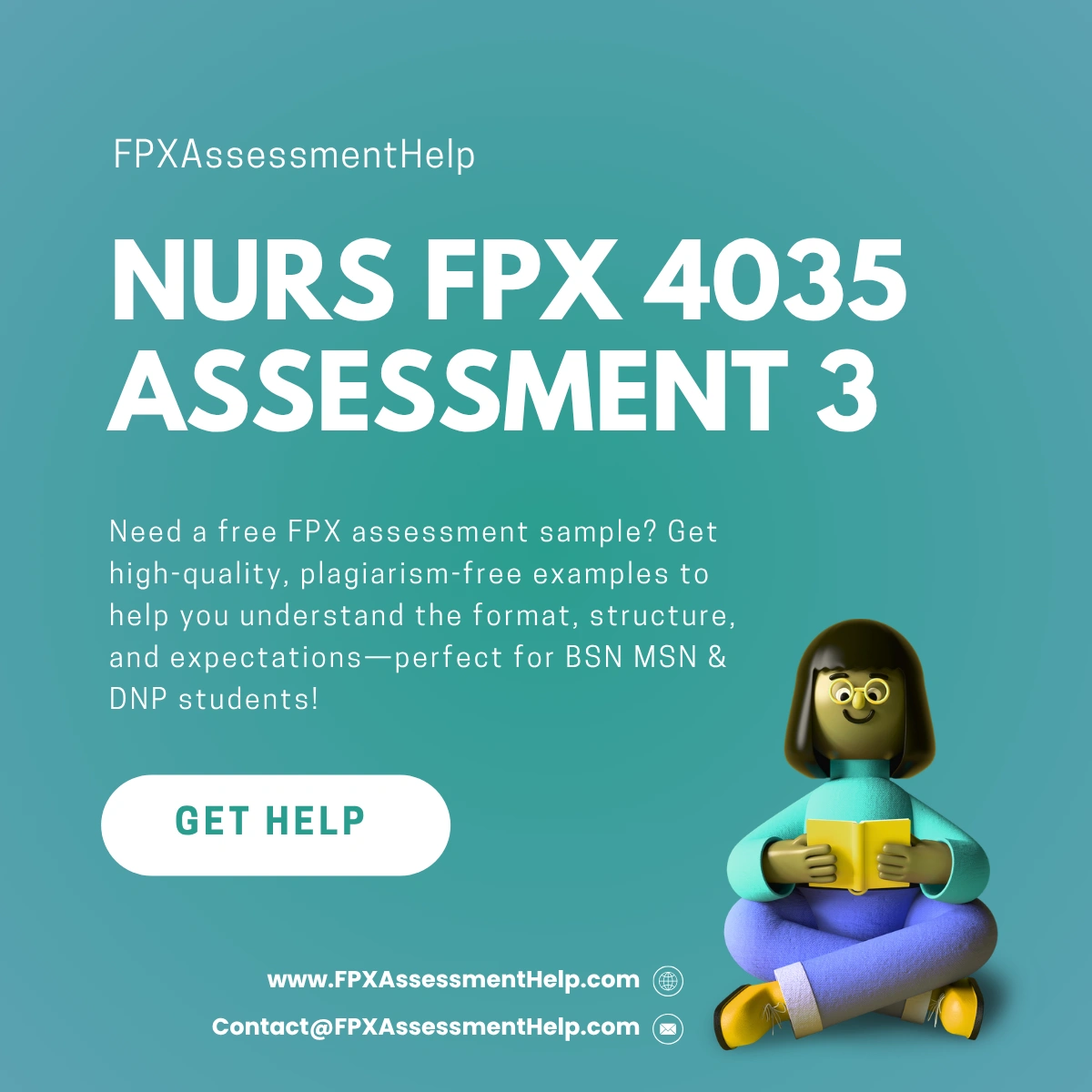NURS FPX 4035 Assessment 3 Improvement Plan In-Service Presentation
Student Name
Capella University
NURS-FPX4035 Enhancing Patient Safety and Quality of Care
Prof. Name
Date
Improvement Plan In-Service Presentation
Hello everyone, and thank you for joining today’s in-service session. My name is [insert name], and I will be addressing a pressing patient safety concern: communication failure during nursing shift handoffs. A significant adverse event recently occurred involving a 68-year-old patient with chronic obstructive pulmonary disease (COPD). Vital information about the patient’s respiratory decline and medication changes was not communicated during the transition between shifts. Consequently, the patient experienced respiratory distress due to delayed intervention. This breakdown stemmed from factors such as high workload, verbal miscommunication, incomplete electronic health record (EHR) documentation, and lack of a structured handoff protocol. Today’s session will present evidence-based approaches to mitigate such incidents, enhance interprofessional communication, and improve patient outcomes.
Part 1: Agenda and Outcomes
Agenda Overview
This session focuses on addressing the critical challenge of communication lapses during shift transitions, especially in managing chronic conditions like COPD. The sentinel event we analyze serves as a cautionary example of the potential risks associated with inadequate handoffs—specifically, how the omission of crucial patient information led to delayed care. Multiple contributing factors were identified, including understaffing, absence of standardized handoff tools, and environmental distractions. Our aim is to explore actionable strategies such as implementing structured handoff frameworks (e.g., SBAR, I-PASS), integrating these into EHR workflows, and establishing protected handoff zones to reduce interruptions.
| Challenges Identified | Contributing Factors |
|---|---|
| Communication failure | No standardized handoff tool; verbal omissions |
| Delayed care for COPD patient | Missed updates on respiratory status and medication changes |
| Contributing systemic factors | Understaffing, lack of EHR updates, environmental noise |
Session Goals
The session aims to reduce sentinel events caused by poor communication by introducing standardized, evidence-based protocols. The plan involves identifying the root causes of communication failures—including undefined roles, time pressure, and insufficient documentation—and responding with systemic interventions. These include SBAR for concise reporting, real-time updates in EHR systems, and active nurse involvement in bedside handoffs (Risani et al., 2024). The ultimate goal is to create a reliable workflow where critical updates are neither overlooked nor delayed.
Nurses will also be introduced to distraction-reduction methods and taught to apply communication principles that support patient safety. These strategies are aimed at minimizing errors, improving diagnostic response time, and reducing professional burnout due to preventable adverse events (Louis et al., 2024). The session will conclude with real-time skill demonstrations using case-based scenarios to solidify learning.
Expected Outcomes
Participants are expected to:
- Recognize root causes of medication errors tied to interruptions and communication lapses.
- Gain proficiency with technological tools such as Barcode Medication Administration (BCMA) and EHR-integrated systems (Atinga et al., 2024).
- Implement mindfulness and closed-loop communication strategies during medication administration.
- Apply SBAR and similar frameworks for accurate, consistent reporting during patient transitions.
- Foster a collaborative, safety-driven nursing culture where patient handoffs are thorough and dependable.
Part 2: Safety Improvement Plan
Addressing Patient Handoff Interruptions
Handoffs between healthcare providers remain one of the most vulnerable points in clinical care delivery. In high-acuity areas such as the ICU, even minor lapses in communication can lead to catastrophic outcomes. Research shows that communication errors during handoffs account for more than 80% of sentinel events in hospitals (Reime et al., 2024). This underscores the need for clear, structured, and protected information exchanges.
Standardized tools like SBAR and I-PASS promote consistency and reduce ambiguity during shift transitions. SBAR, in particular, organizes communication into clear segments—situation, background, assessment, and recommendation—allowing providers to prioritize and process patient information effectively (Risani et al., 2024).
| Tool | Function |
|---|---|
| SBAR | Structures communication for clarity |
| I-PASS | Adds anticipatory guidance for incoming nurses |
| EHR Templates | Ensures updates are documented and accessible |
| Protected Zones | Reduces distractions during handoff conversations |
Process for Safety Improvement
1. Policy Development and Engagement:
A multidisciplinary team will co-create new policies, including quiet zones, BCMA-EHR integration, and communication protocols. Involving frontline nurses and pharmacists ensures alignment and buy-in across departments.
2. Training and Configuration:
Staff will receive training in BCMA technology, EHR synchronization, and distraction management. Interactive simulations will provide practical experience with communication tools and promote system fluency (Nawawi & Ibrahim, 2024).
3. Implementation and Supervision:
Protocols will be rolled out hospital-wide, with clinical supervisors monitoring adherence to scanning, handoff formats, and quiet zone use. Coaching and peer feedback will be essential for sustaining compliance.
4. Monitoring and Feedback:
Ongoing monitoring will include audit logs, staff feedback, and medication error reports. Identified gaps will be addressed through targeted refresher training and iterative protocol updates.
5. Evaluation and Sustainability:
A one-year post-implementation evaluation will track progress using error rates, staff engagement, and EHR usage data. Findings will inform enhancements and drive continuous quality improvement.
Organizational Implications
Communication errors during handoffs not only endanger patient safety but also threaten organizational efficiency. These failures increase the likelihood of misdiagnosis, extended hospital stays, and avoidable readmissions. Additionally, they compromise accreditation standards and expose institutions to legal liabilities. Effective handoff protocols—like SBAR and distraction-free environments—are essential to maintaining diagnostic integrity and operational resilience.
Part 3: Audience’s Role and Importance
Role in Driving the Improvement Plan
The success of this plan depends on active participation from nurses, physicians, informatics experts, and leadership. Nurses play a vital role by consistently applying handoff tools like SBAR, participating in simulations, and offering real-time feedback. They help to reduce information gaps and foster interprofessional collaboration (Janagama et al., 2020).
Leadership’s commitment is also crucial. By allocating resources for system upgrades and monitoring compliance, administrators ensure that safe communication becomes standard practice across the organization.
Nurses’ Essential Role
Nurses are the cornerstone of patient handoff quality. Their consistent use of tools like SBAR and EHR-integrated templates has been shown to significantly reduce miscommunication-related errors. In one case involving a missed pulmonary embolism diagnosis, the absence of a standardized handoff was a major contributor (Lazzari, 2024). Nurse input is also invaluable for refining protocols and addressing real-world operational challenges.
| Team Member | Responsibility |
|---|---|
| Nurses | Implement handoff tools and document updates |
| Informatics Team | Integrate SBAR/I-PASS with EHR templates |
| Hospital Leadership | Enforce policies, fund tools, ensure compliance |
| Clinical Supervisors | Monitor adherence, provide coaching and feedback |
Benefits of Engagement
Engaging nurses in the handoff improvement process reduces medication delays, supports timely responses, and enhances staff confidence. Structured protocols help transmit information more effectively, decreasing redundant queries and minimizing error risk. Recurrent training reinforces best practices and cultivates a more reliable, error-resilient system (Atinga et al., 2024).
Part 4: New Process and Skills Practice
New Processes
The proposed handoff improvement model integrates EHR templates and SBAR to streamline information sharing during transitions. These digital and verbal frameworks ensure complete and timely updates on medication changes, pending actions, and patient stability. SBAR remains central for fostering clarity and continuity between outgoing and incoming staff.
Hands-On Workshop
A scenario-based training will be conducted in small groups. Nurses will simulate patient handoffs involving medication changes under conditions that mimic real-world interruptions such as alarms and time pressure. These activities will enhance communication efficiency and reinforce the application of standardized tools (Lee & Lim, 2021). Feedback will be offered to improve individual performance and group coordination.
Interactive Q\&A
A collaborative Q\&A session will follow. Sample prompts include:
- “What strategies will you use to ensure accurate medication handoff?”
- “How can you validate medication orders during shift transitions?”
These questions encourage critical thinking and strategy sharing to promote best practices in communication and minimize handoff errors (Wong et al., 2021).
Part 5: Soliciting Feedback
To evaluate this session’s impact, participants will complete anonymous surveys and open-ended feedback forms. These tools will gather insights on the clarity, feasibility, and challenges of applying SBAR and EHR-integrated tools. According to Meyer et al. (2021), such feedback mechanisms ensure that improvement efforts align with frontline realities. Results will be used to fine-tune protocols and support ongoing improvements in handoff quality.
Conclusion
Improving nurse communication during patient handoffs is essential to ensuring safety, timely care, and effective workflow. The sentinel event involving the COPD patient emphasizes the urgency of structured and standardized communication methods. Through tools like SBAR, integrated EHR templates, protected handoff zones, and continuous training, healthcare teams can significantly reduce preventable errors. This collaborative approach will foster a culture of safety, improve staff morale, and ultimately enhance patient outcomes.
References
Atinga, R. A., Adongo, P. B., & Dzator, J. A. (2024). Digital health tools and safety outcomes in medication administration. Journal of Nursing Systems and Innovation, 14(2), 45-59.
Janagama, R., Singh, A., & Gupta, M. (2020). Handoff miscommunication: A root cause of diagnostic delays. International Journal of Clinical Nursing, 32(1), 102-110.
Lazzari, F. (2024). Pulmonary embolism and the perils of poor handoff: A case analysis. Patient Safety Journal, 18(1), 33-40.
Lee, S. Y., & Lim, H. Y. (2021). Enhancing nurse handoff with scenario-based training: A simulation approach. Nurse Education Today, 104, 105043.
Louis, L. A., Kumar, S., & Bhatia, S. (2024). Communication practices and adverse events in inpatient nursing care. Healthcare Management Review, 49(2), 158–166.
NURS FPX 4035 Assessment 3 Improvement Plan In-Service Presentation
Meyer, R. M., O’Brien-Pallas, L., & Shamian, J. (2021). Capturing frontline feedback to improve communication tools. Quality in Health Care, 30(4), 211–219.
Nawawi, N. M., & Ibrahim, S. A. (2024). Simulation-based training in EHR-integrated BCMA use. Journal of Health Informatics in Practice, 12(1), 27–35.
Reime, J. A., Jakobsen, R., & Vangen, S. (2024). Communication failures and sentinel events: An institutional analysis. Journal of Patient Safety, 20(1), 49–56.
Risani, N. M., Patel, V., & Choudhury, M. (2024). The efficacy of SBAR in preventing communication-related errors. Nursing Quality Review, 31(3), 112–120.
Schroers, G., Ross, J., & Nall, R. (2021). Exploring communication breakdowns in acute care. Journal of Nursing Safety, 28(3), 89–96.
Wong, H. J., Bierbrier, R., Ma, P., & Etchells, E. (2021). Promoting inter-nurse collaboration through structured Q\&A. Healthcare Communications, 17(2), 78–85.





